SUMMARY
VENOM: Toxic
PREVALENCE: Common
ACTIVE PERIOD: Active at night
KEY ID FEATURES: Blue, green and yellow morphs can be found, wide head, thin neck, keeled scales and reddish orange tail
BEHAVIOR: Ambush predator usually stays still and ready to strike, will bite readily with fast strikes
SIZE: Small/Medium - 40-60cm
QUICK ASSESSMENT 0-10
GALLERY
IMPORTANT: Many snakes have significant variance in coloration and pattern even within the same species. There can also be extreme differences in appearance from juveniles to adults so it is important to never assume you have properly identified a snake.
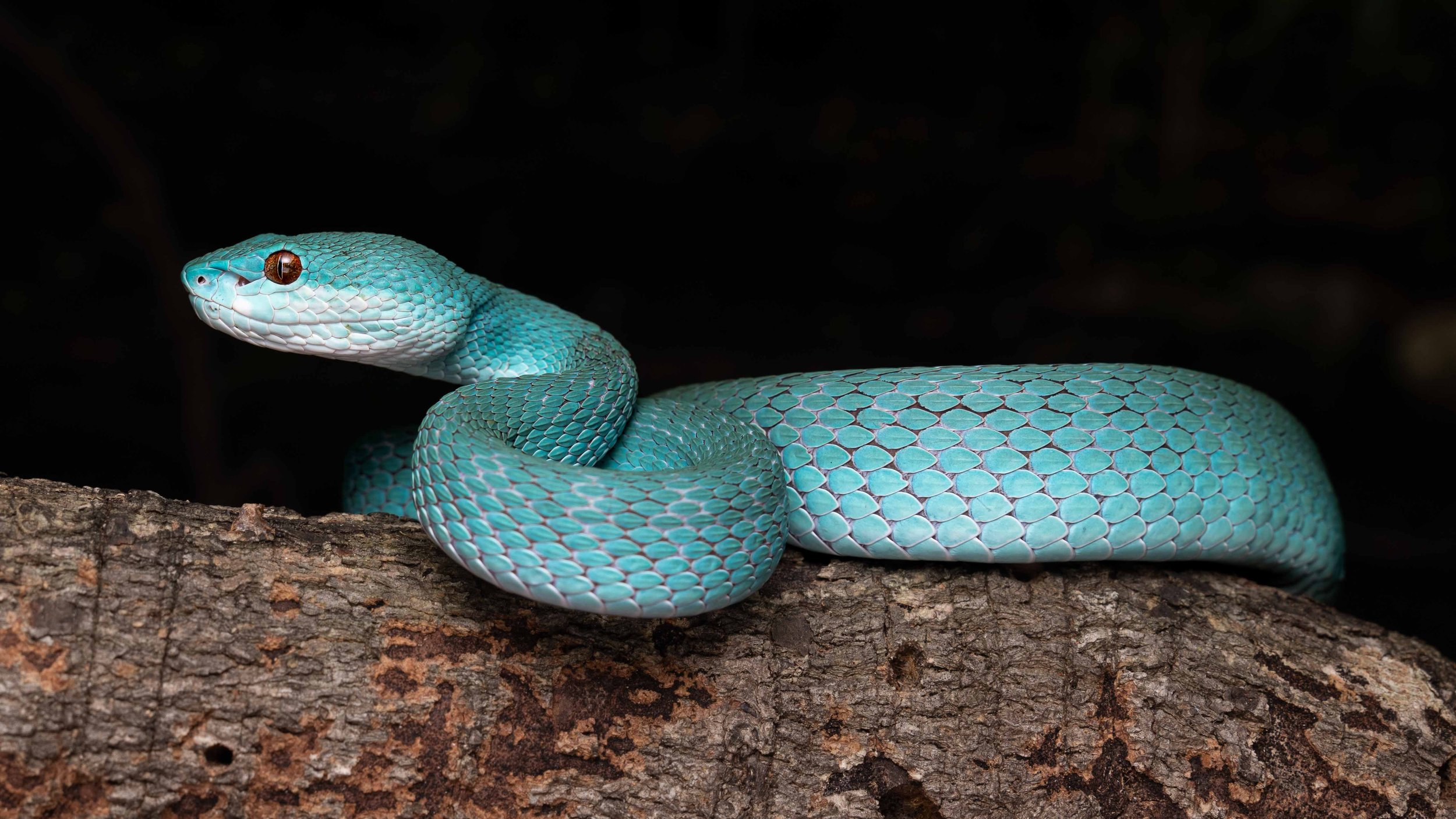
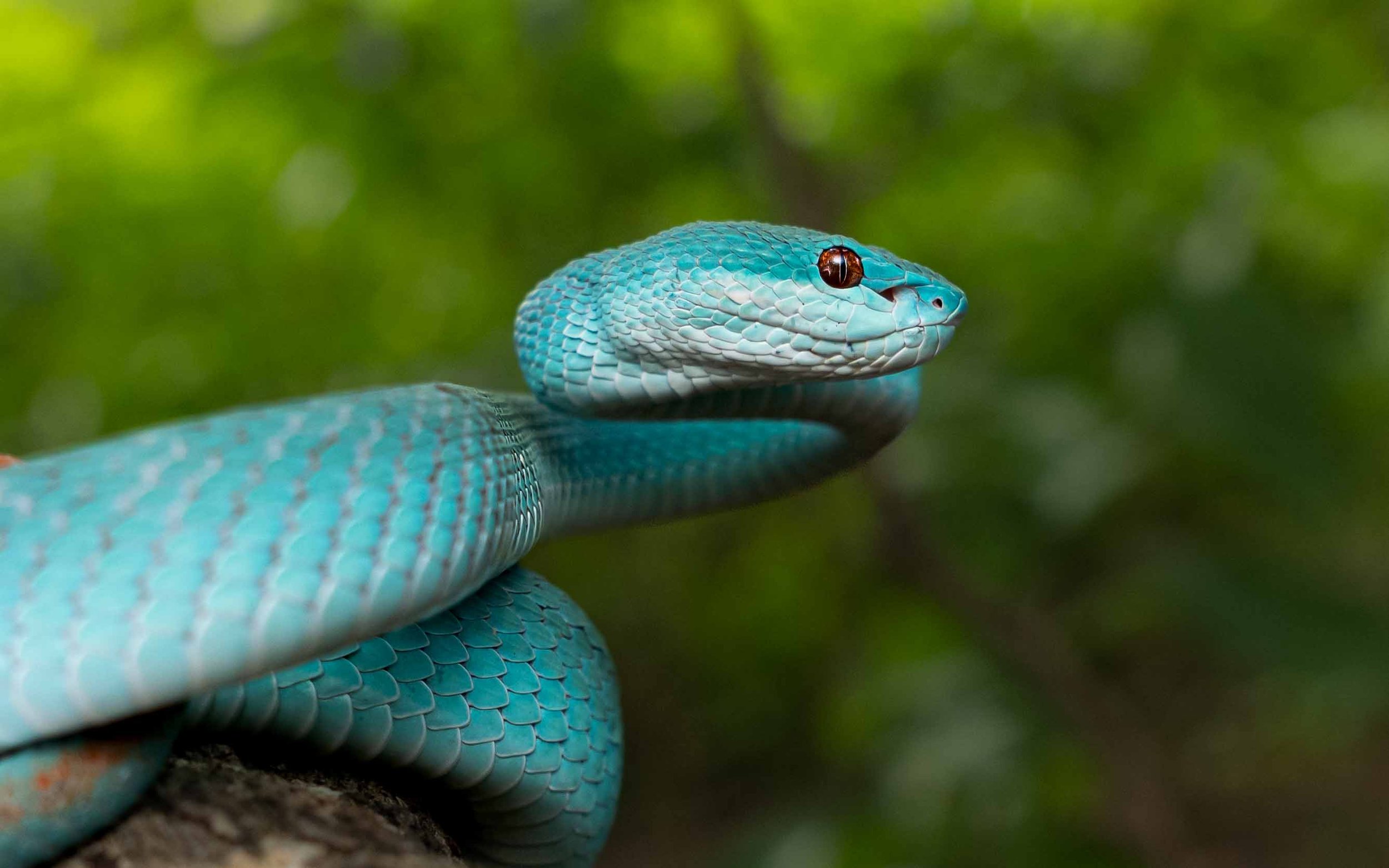
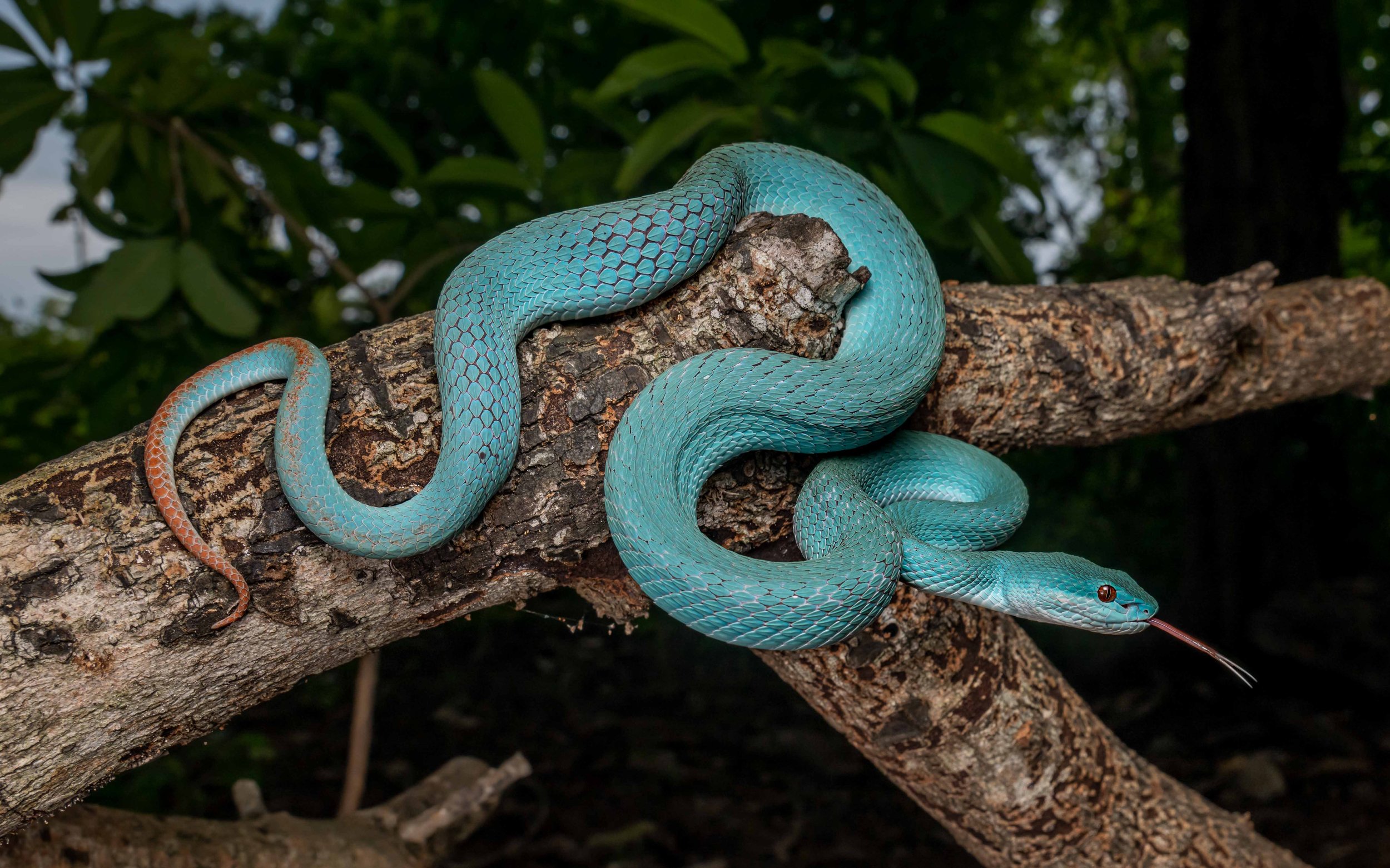
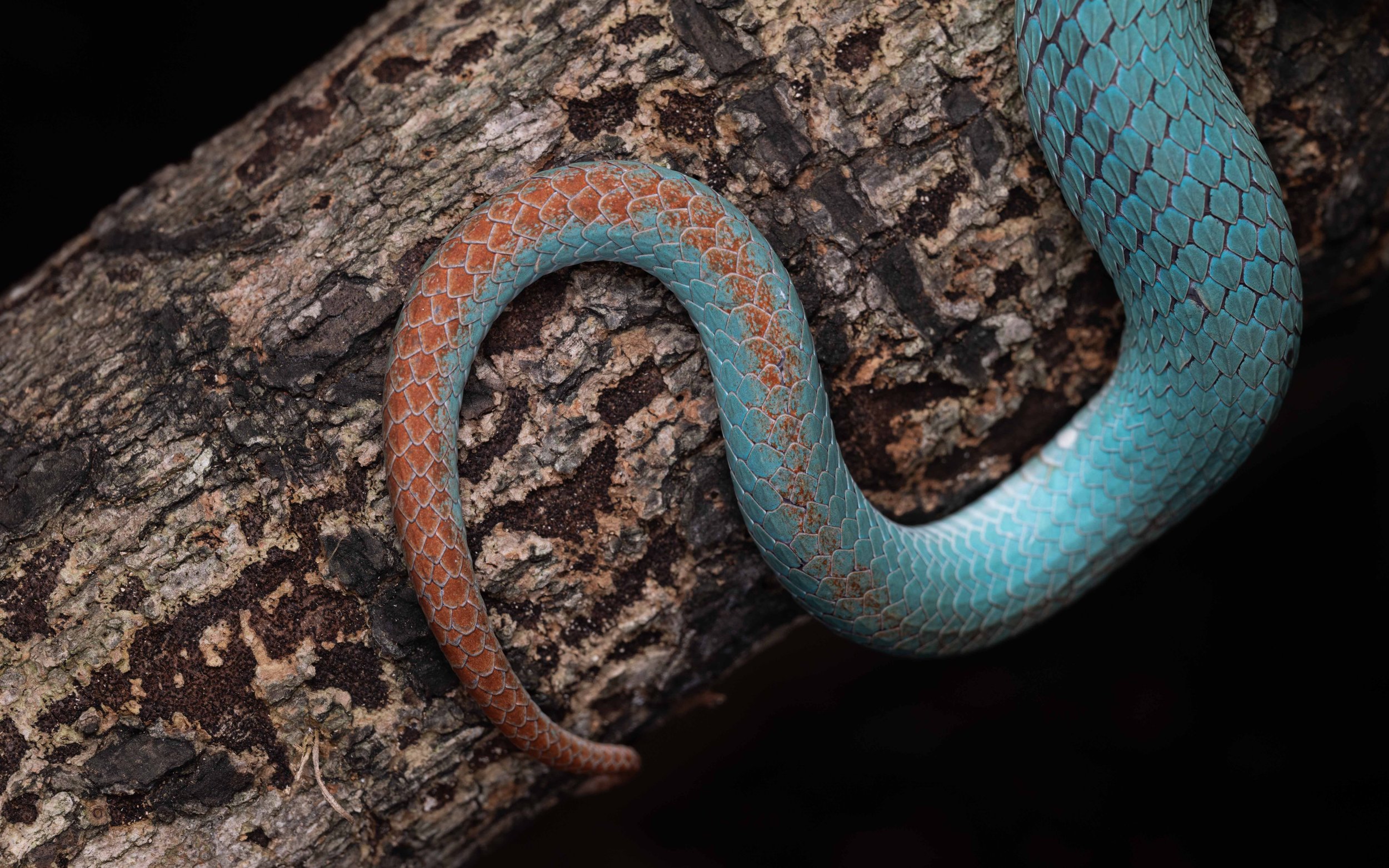
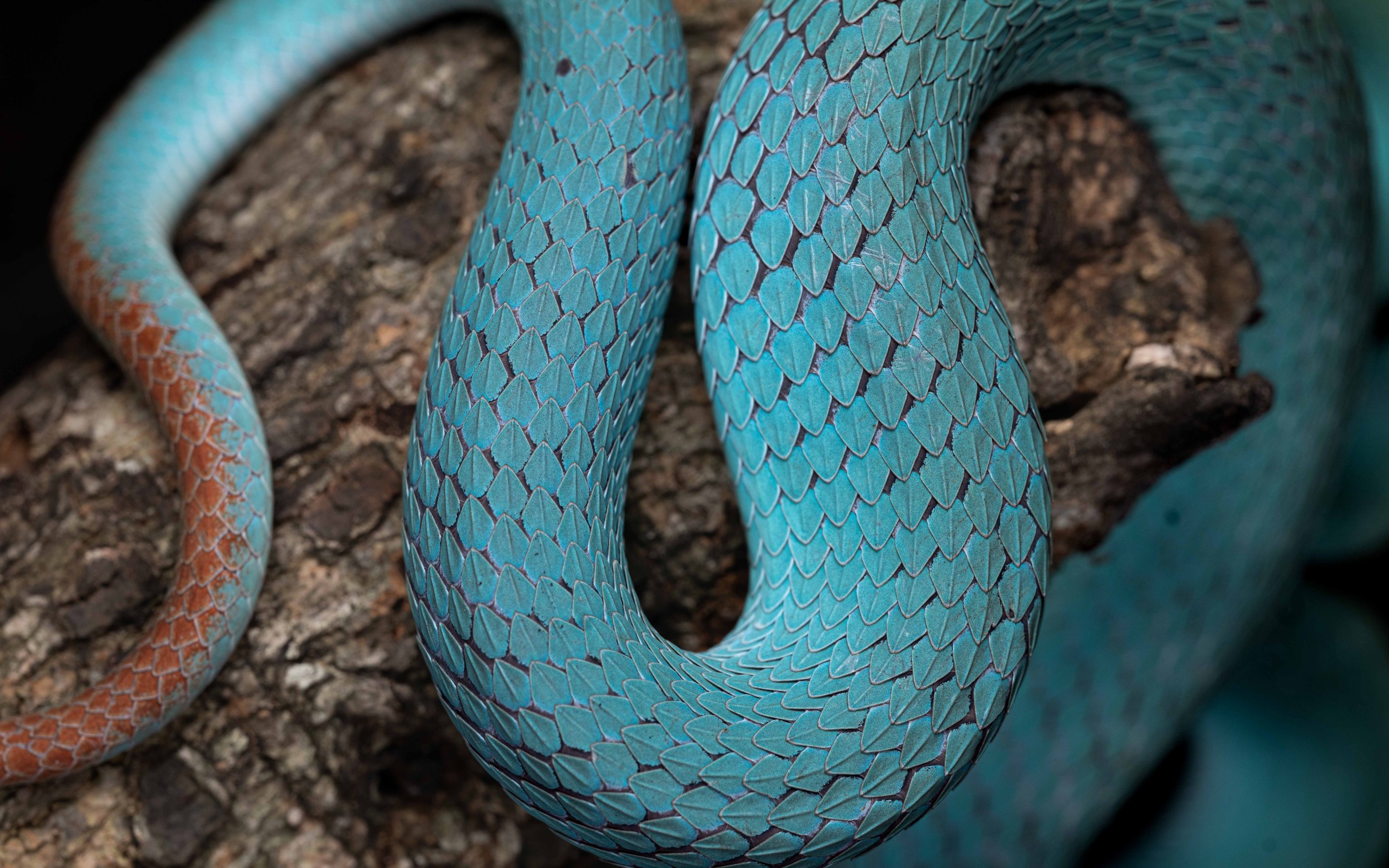
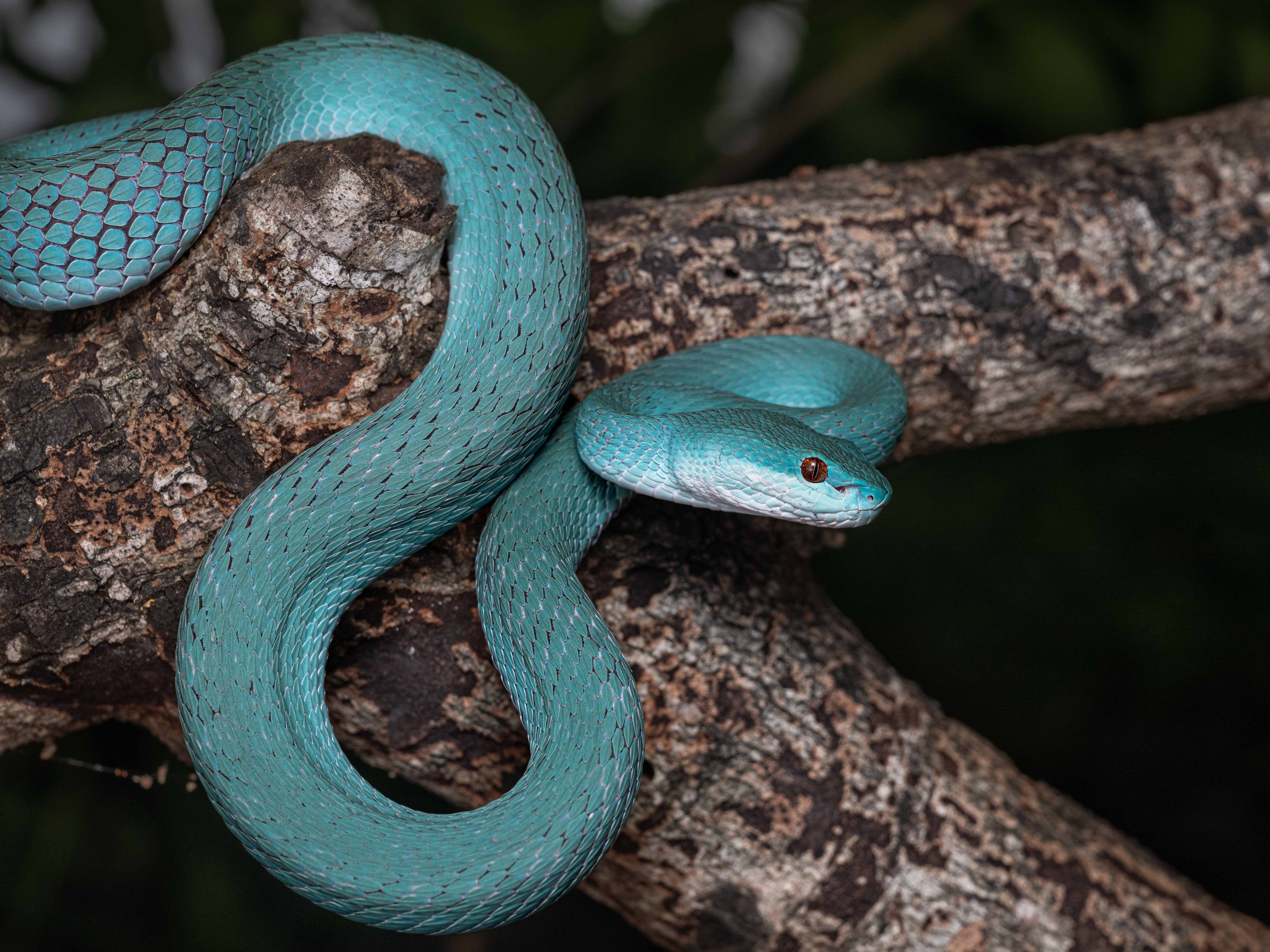
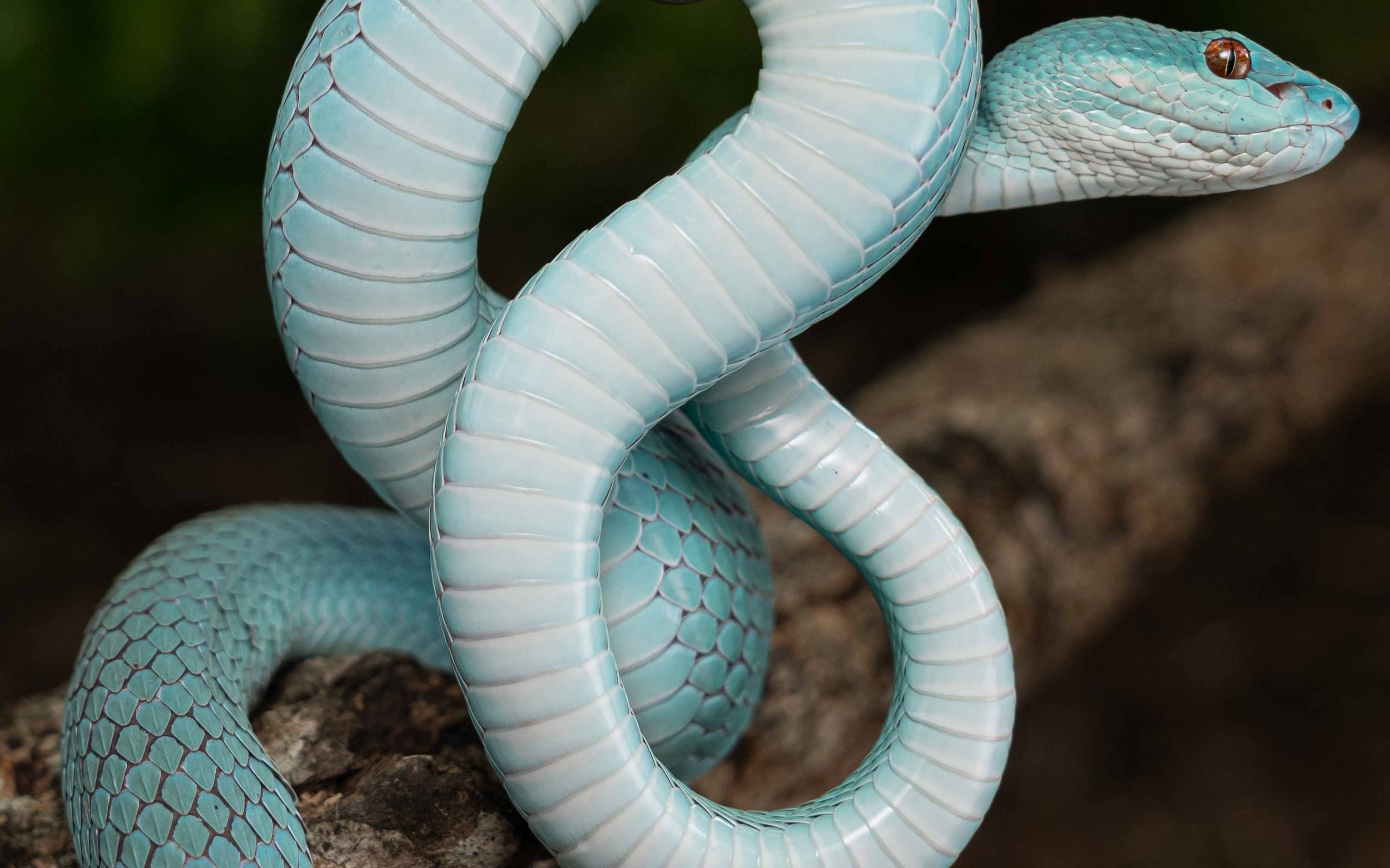

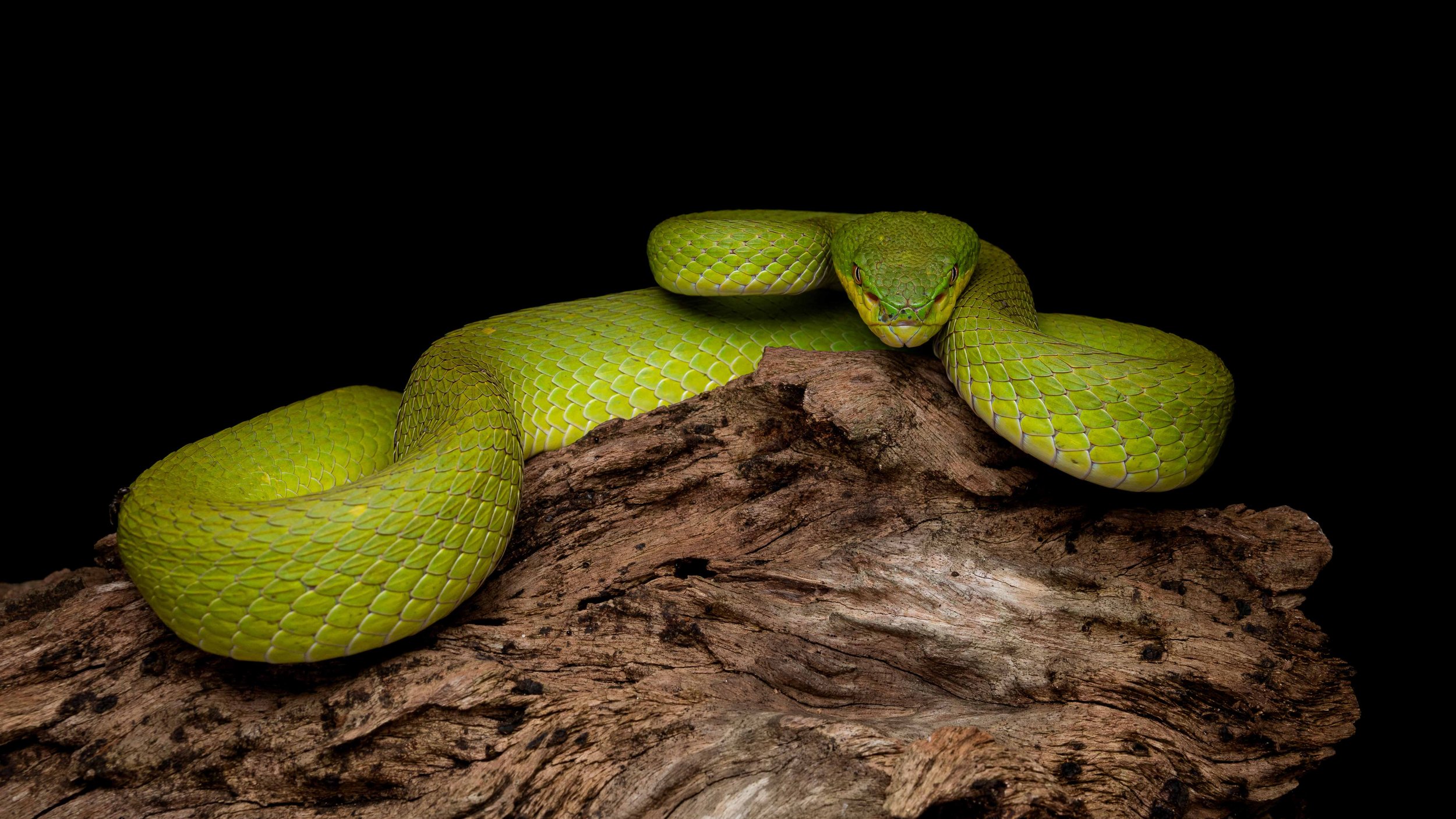
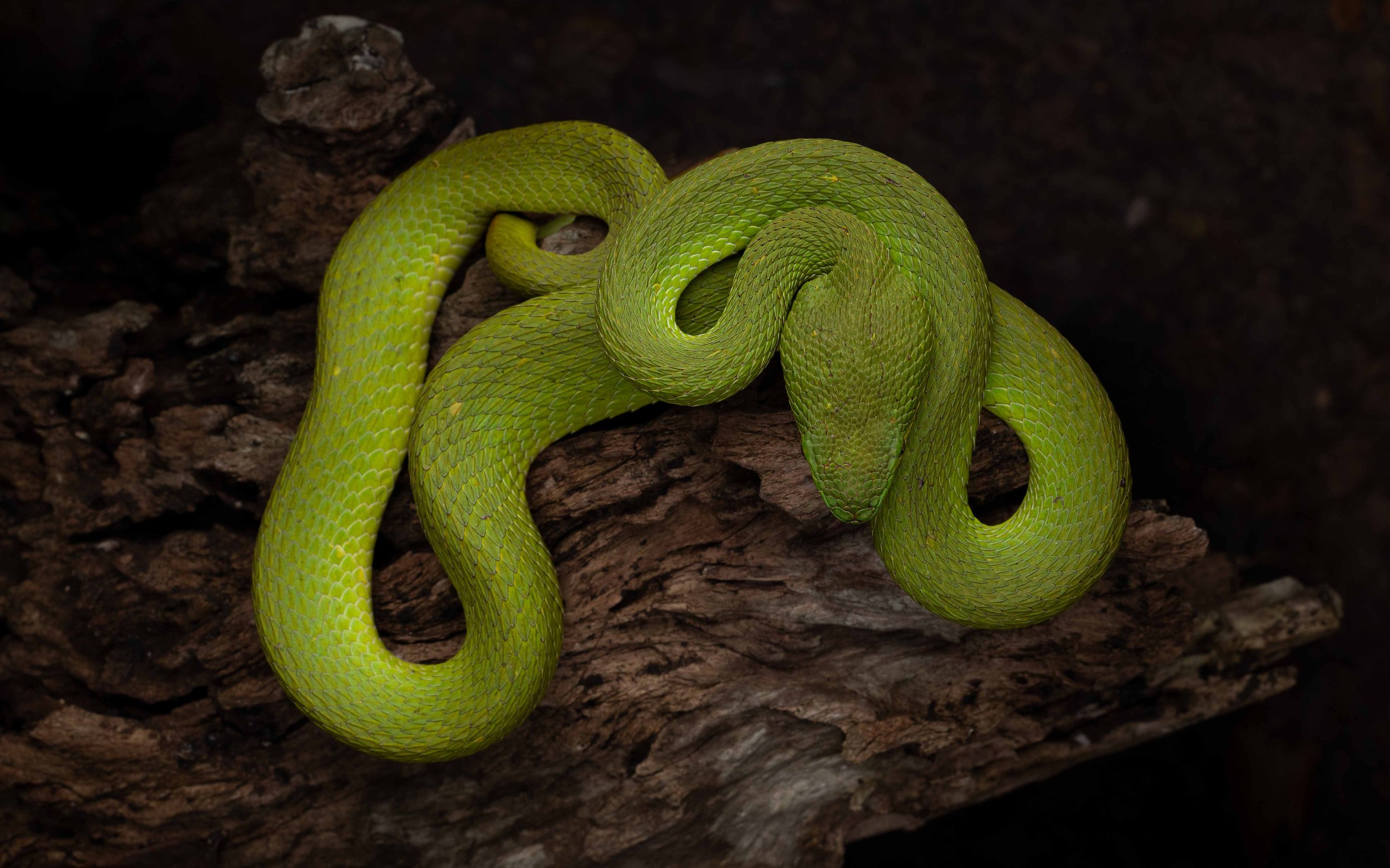
DESCRIPTION
A venomous species. The Insular Pit Viper can be found as blue, yellow or green individuals with yellow or white ventrals. Eye color can also vary from grey to red to yellow. All individuals will have a red, orange or light red tail. Scales are keeled and head is wide at teh jaw which is distinct from the neck.
BEHAVIOR
Active at night and occasionally resting in bushes during the day. The Insular Pit Viper is an ambush predator that will wait in a single position ready to strike. They are a viper and have relatively long retractable fangs and will bite readily at anything that comes within range. Generally not prone to give chase but will hold their ground if they feel cornered. Not actively aggressive but will not hesitate to bite. A bite from an Insular Pit Viper should be considered very serious and medical attention should be sought immediately. Although not known to be deadly serious damage can occur from a bite even if treated and complications can always arise.
HABITAT
Generally found in forested areas along open spaces like trails or abandoned roads or structures where geckos and other prey can be ambushed.
MISTAKEN IDENTITY
NO SNAKE SHOULD EVER BE HANDLED BY ANYONE BUT EXPERTS: Relatively distinct looking with a large triangular head. No viper should ever be approached or handled. If found observe from a safe distance.

